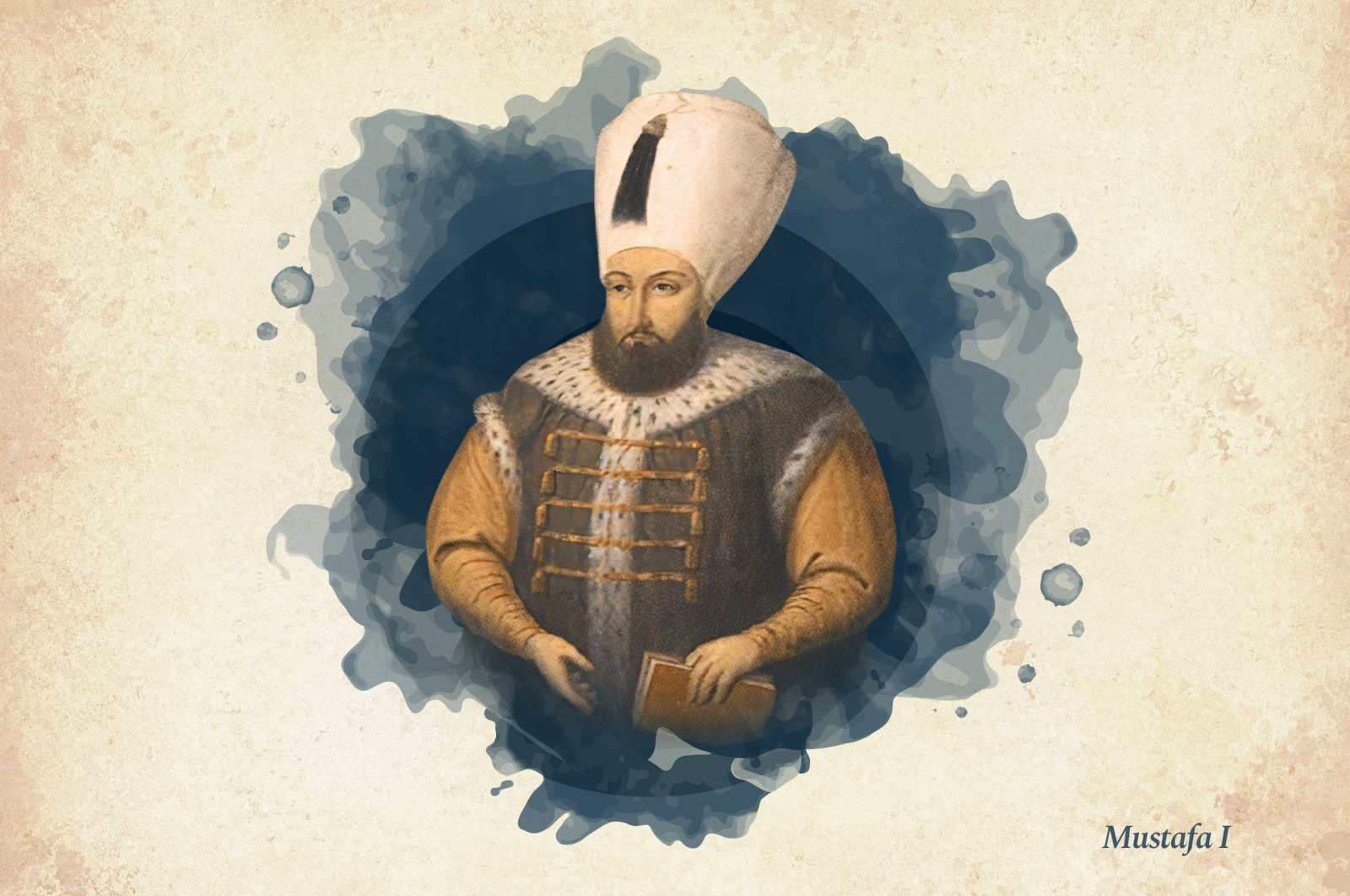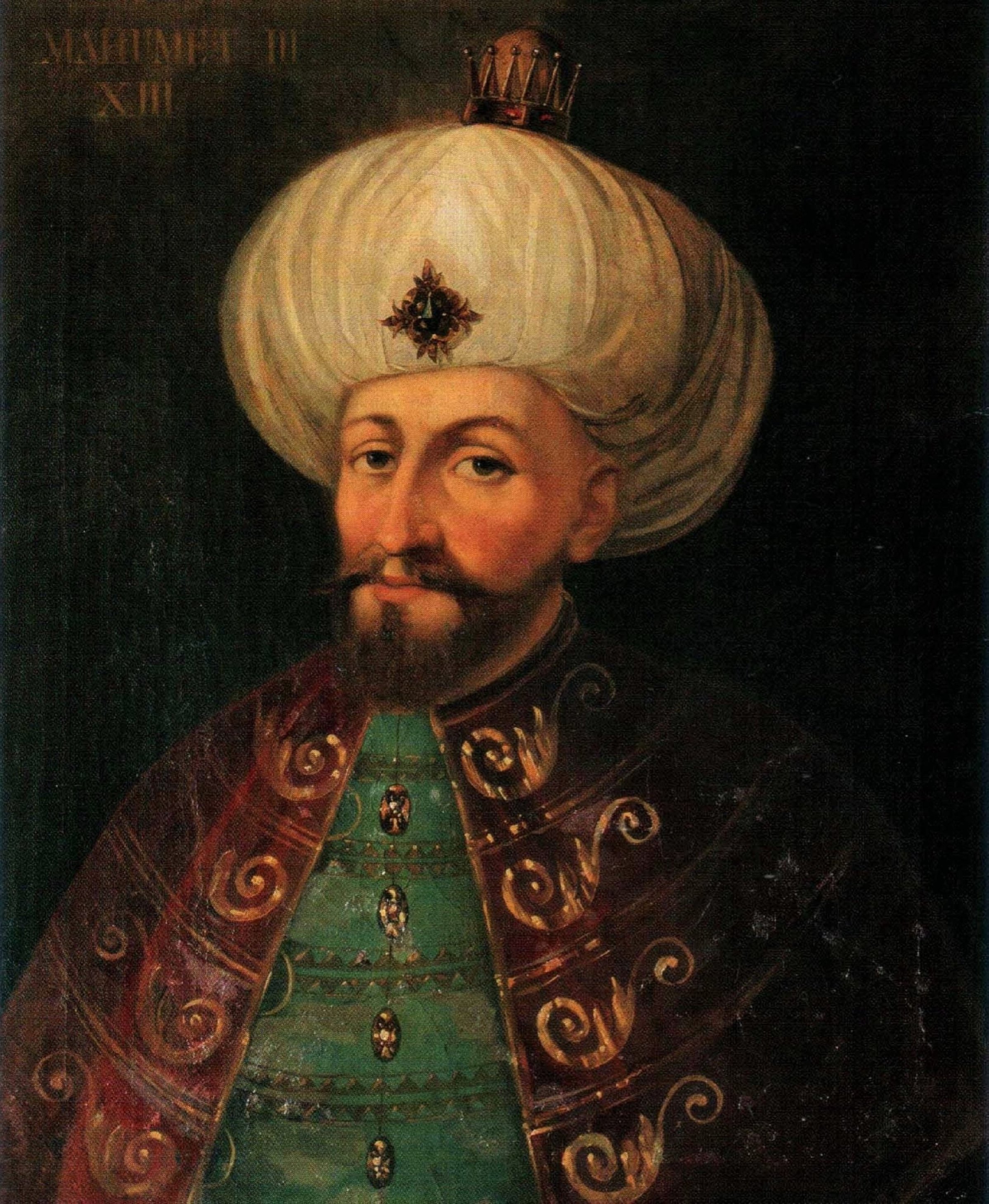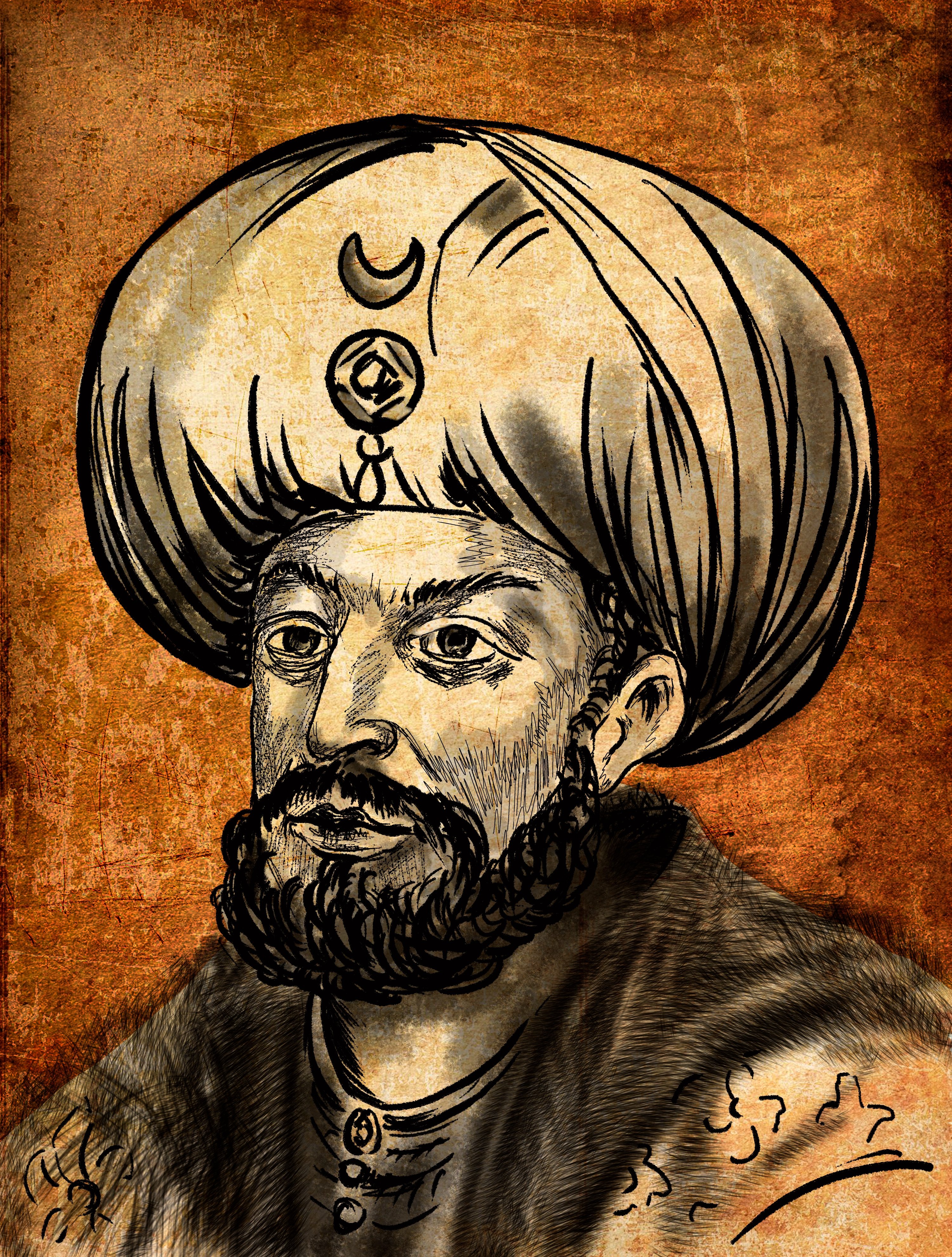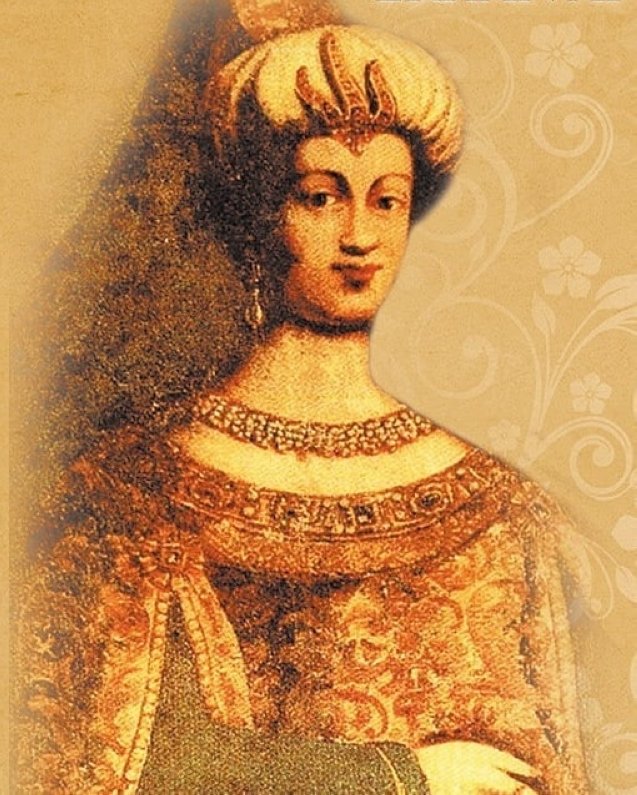
MIGHTY SOVEREIGNS of OTTOMAN THRONE: SULTAN MUSTAFA I
Sultan Mustafa I, the 15th of the Ottoman sultans, was born in Manisa in 1591 to Sultan Mehmed III and Halime Haseki. When his older brother, Sultan Ahmed I, ascended the throne, he strayed from the customs of previous sultans and did not have his brothers executed for the sake of the public; He didn't touch his brother. In fact, Şehzade (Prince) Mustafa lived in his chamber in the palace.

The fact that Sultan Ahmed I did not have his brother Mustafa killed can be attributed for the most part to his tolerant personality. When he ascended the throne, 14-year-old Sultan Ahmed I had no children. Though he later did have children, Sultan Ahmed still never showed aggression toward his brother. It was not uncommon for child şehzades to die from chronic illnesses and unexpected accidents, so the sultan probably adopted this approach fearing the collapse of the dynasty.
The fact that his father's execution of his 19 brothers when he ascended the throne caused a public uproar also likely played a role in the young sultan's decision. If what is said about Şehzade Mustafa's mental state is true, Sultan Ahmed may not have seen him as a threat.
When Sultan Ahmed I passed away in 1617, something unusual happened. Although the deceased sultan had sons, the eldest being 14-year-old, his 25-year-old brother was enthroned. Prior to this, for three centuries, Sultan Ahmed's sons had ascended the throne. This marked the first time that a sultan's brother ascended the throne instead.
However, this cannot be considered a divergence from the lines of succession in the full sense. Because, after Sultan Mustafa, Sultan Ahmed's three sons Osman, Murad and Ibrahim ascended the throne. The first two had no sons. So, Mehmed IV, son of Sultan Ibrahim, succeeded to the throne. Despite having grown sons, when Sultan Mehmed IV was deposed in 1687, his brother was enthroned. It can be said that at this point the agnatic primogeniture method, in which the sultan's firstborn inherits the throne, was abandoned by the Ottomans and the agnatic seniority method, in which the order of succession preferred the sultan's younger brother over his own sons, was firmly established.
Alphonse de Lamartine, 19th-century French author, poet, and statesperson said: "His keeping his brother alive dignified Sultan Ahmed I; but this precedent became a disaster for the empire."
It is noteworthy and unusual that the coins minted during the reign of Sultan Mustafa I were inscribed with the name of the sultan's father and elder brother. How and why Sultan Ahmed's brother ascended the throne, rather than his son, are still not fully understood.
Although Ottoman sources state that Grand Vizier Sofu Mehmed Pasha and Sheikh al-Islam Es'ad Efendi, also known as Hocazade Esad Efendi, played a role in this, the argument that the sultan's children were too young does not stand up. This is because age has no bearing when it comes to ascending the throne. When Sultan Mehmed I took the throne he was 12 years old, Sultan Ahmed I was 14 years old. Şehzade Osman, son of Sultan Ahmed I, was 14 years old.

There is another narration in Western sources. When her husband Sultan Ahmed passed away, Kösem Sultan, also known as Mahpeyker Sultan, her three sons were younger than her stepson Şehzade Osman. She may have preferred the sultanate of her weak and dervish-like brother-in-law Şehzade Mustafa, to that of Şehzade Osman, out of concern for her sons' lives under their stepbrother. Historians place more emphasis on this possibility.
After he ascended the throne, it was clear that Sultan Mustafa I's psychological state had deteriorated. It was first thought to be a temporary issue caused by living in the palace for years in fear of being executed at any moment. Doctors attempted to treat it, many a medicine was administered. But it didn't help.
At the same time, there was a group that had an interest in the continuation of his sultanate and wanted to rule the country behind the scenes. They attributed the sultan's strange actions to a state of cezbe (mystical rapture) arising from his excessive fondness for Islamic Sufism – like his father and brother – and to his "intolerance to the turmoil of the mortal world." They also spread his karamat, supernatural wonders performed by Muslim saints, among the people.
A wise man, Kızlarağası Mustafa Agha – chief black eunuch of the imperial harem of the Ottoman sultans – harbored a grudge against the sultan. He began to propagate that the sultan was acting abnormally. He spread rumors that the ruler constantly watched the sea, put on performances of the theater, gave jewels to the players and visited tombs and sprinkled pearls upon the fish in the sea.
When these tales failed to provide the desired effect, he sent a masterful message that would alarm the heads of state and dignitaries. According to his message, the sultan was to have the şehzades executed. This meant the end of the dynasty. Sultan Mustafa I did not have children, and he did not let women near him.
One day, when the soldiers were in the palace to receive their salaries, the kızlarağası locked the sultan's chamber. Thus, Sultan Mustafa I was dethroned within three months of his ascension by those who enthroned him to begin with.
On Feb. 26, 1618, Şehzade Osman, the eldest son of Sultan Ahmed I, was enthroned. In the edict issued on the sultan's accession to the throne, it was said that Sultan Mustafa I abdicated the throne. Sultan Osman II declared that his uncle's taking the throne was against the law.
After Sultan Osman II was dethroned as a result of a great, bloody military coup, the rebels entered the palace, which was left unprotected by the grand vizier. They broke a hole in the dome of Sultan Mustafa's chamber and descended, killing the palace aghas, officers, who resisted.
Although the ulama, scholars of Islamic law, and state officials resisted, declaring that the reign of a mentally unstable person could not be upheld, they yielded at gunpoint. Thus, on May 19, 1622, Sultan Mustafa I was enthroned once again by rebel soldiers. Topkapı Palace was not considered safe. For this reason, he was taken by carriage – as he could not stay up on a horse – to the Old Palace in Bayezid district, and from there to the janissary barracks in the Aksaray district.
He was the last sultan to ascend the throne twice, after Sultan Murad II and Sultan Mehmed II. The restoration of a monarch who was known to be mentally unstable and who was deposed for this very reason is even more astonishing than his first ascension. Sultan Osman II did not touch his uncle because he never considered that such an ill person would be put on the throne again.
This reign of Sultan Mustafa was temporary. He insisted on staying away from the palace unless he was meeting with Sultan Osman II; but he couldn't make them listen. After the murder of Sultan Osman II, his reign continued, lasting even longer than the first time.

His mother was a smart and strong woman, though not as smart as Mahpeyker Kösem Sultan. She supported her son when faced with intrigues. His mother dictated the sultan's edicts.
The spiritual attraction of the people toward the sultan, who was of a saintly disposition and wept when he could not do anything, is mentioned in sources from that period. During bayram (holiday) celebrations, the fact that the sultan would stand to greet all guests despite it being customary for sultans to only stand for those in the scholars – demonstrated his humility.
During this time, military turmoil continued. There were attempts to avenge Sultan Osman II, who was loved by the people. The most important of these was the rebellion of Erzurum governor, Abaza Mehmed Pasha. Given the indignation and regret caused by what was done to Sultan Osman II, the state officials and officers who had a hand in the conspiracy were killed one by one by the janissaries and sipahis who wanted to shift the blame away from themselves.
The Polish Cossacks, who wanted to take advantage of these internal conflicts, did not comply with the terms of their prior agreement and attacked the Ottoman shores with around 150 small ships called chaika. The Black Sea commander Damat Recep Pasha, who was sent to battle the Cossacks, followed the Polish frontiersmen and sank many of their ships in front of Kilgra, and after capturing 21 ships, he returned to Istanbul with 5,000 slaves.
After the tragedy of Sultan Osman II, Sultan Mustafa's mental state completely deteriorated. It is rumored that he wandered through the halls of the palace, knocking on every door, and crying out, "Osman, come and save me from this great burden."
.jpg)
With no security in the capital, governors in Anatolia and Rumelia were growing increasingly disobedient. The new Grand Vizier Kemankeş Mustafa Pasha believed the only way to save the country was to find an astute sultan and thus decided to dethrone the sultan. He came to an agreement with the ulama dignitaries.
In line with the Abbasid tradition, every sultan would honor his soldiers with a coronation tip when he ascended the throne. However, the treasury could not handle a third coronation tip. For this reason, the soldiers were made to promise not to ask for one; however, they failed to keep this promise.
Then the sultan's mother was informed about the situation. She was told that her son's sultanate was not permissible due to his mental state. They came to an agreement that the sultan would be posed questions like "What is your name? What is your father's name? What day is it today?" and if he could answer the questions, he would stay on the throne.
After his second reign, which lasted one year, three months and 21 days, on Sept. 10, 1623, Sultan Mustafa I was sent to his chamber in the Topkapı Palace. Sultan Ahmed's son, Şehzade Murad – Sultan Murad IV – was enthroned.
Sultan Mustafa I passed away on Jan. 20, 1629, 15 years after his second dethronement. He was buried in the old baptistery in the courtyard of Hagia Sophia. He was 47 years old. The Venetian bailo – resident ambassador – described the sultan as having big dark eyes, giving off dull expressions, with a pale face, a sparse beard, and a frail physique.
Önceki Yazılar
-
DEATH IS CERTAIN, INHERITANCE IS LAWFUL!25.06.2025
-
THE SECRET OF THE OTTOMAN COAT OF ARMS18.06.2025
-
OMAR KHAYYAM: A POET OF WINE OR THE PRIDE OF SCIENCE?11.06.2025
-
CRYPTO JEWS IN TURKEY4.06.2025
-
A FALSE MESSIAH IN ANATOLIA28.05.2025
-
WAS SHAH ISMAIL A TURK?21.05.2025
-
THE COMMON PASSWORD OF MUSLIMS14.05.2025
-
WERE THE OTTOMANS ILLITERATE?7.05.2025
-
OTTOMAN RULE BENEFITED THE HUNGARIANS30.04.2025
-
An alternative state to Istanbul in Anatolia: THE ANKARA ASSEMBLY23.04.2025